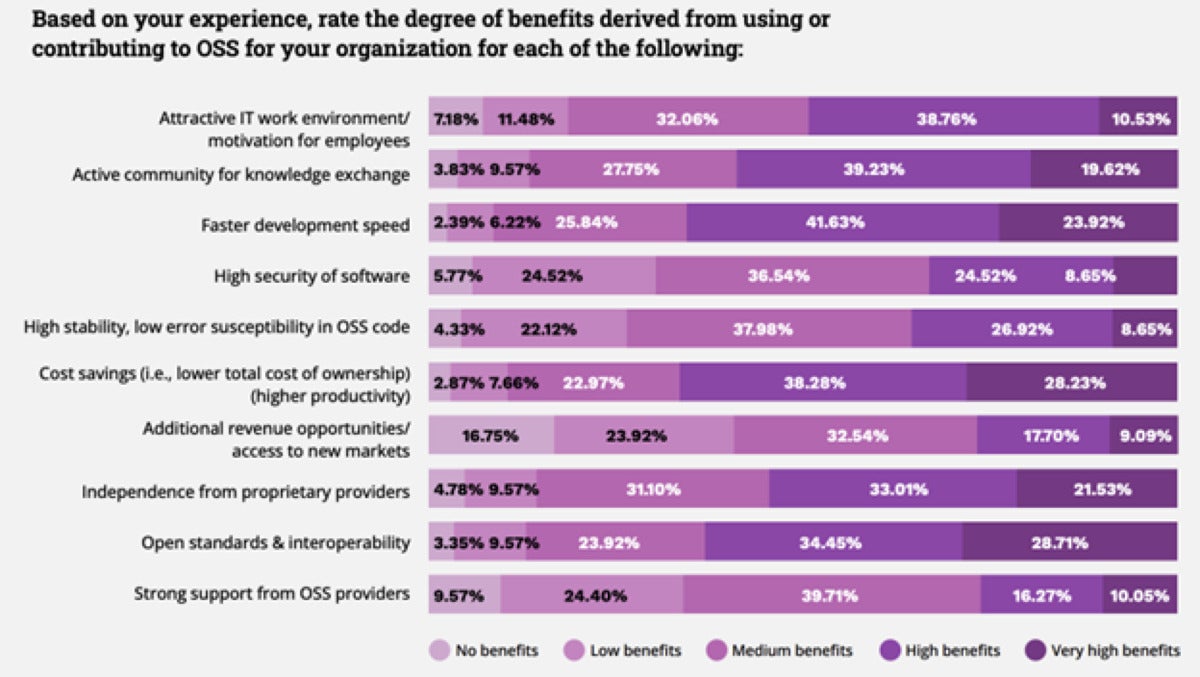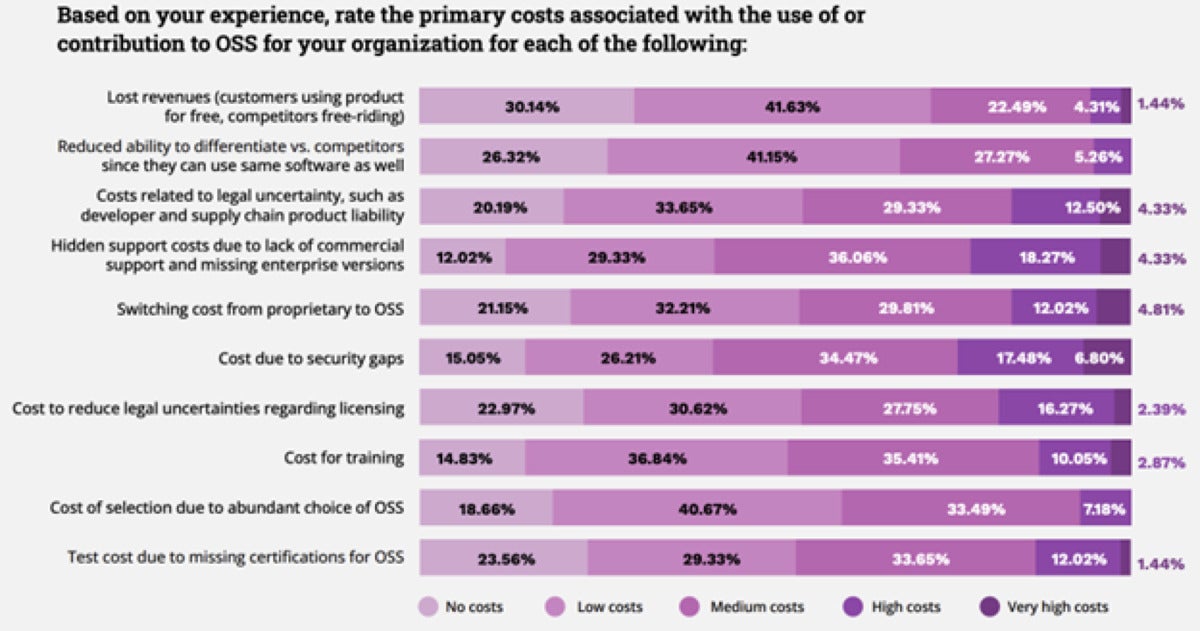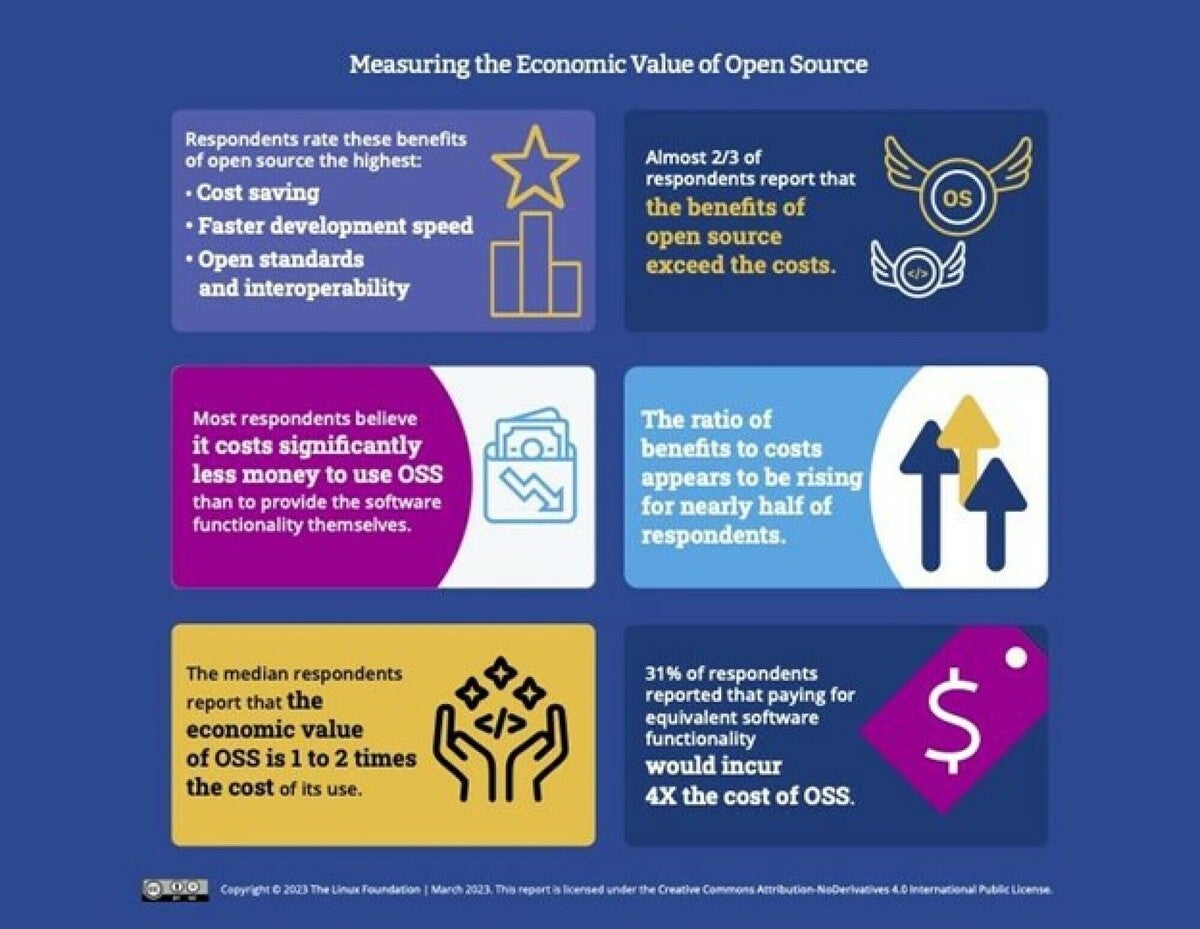Convenience, not cost, drives open source adoption. That’s the primary finding of a new report from The Linux Foundation on the economic value of open source, and it’s a bit counterintuitive. In an interview with Professor Henry Chesbrough, adjunct professor at UC Berkeley and author of the report, he stressed that while cost is a significant perceived benefit of open source, not everyone finds it cheaper. Yet even the “open source costs more” crowd says the benefits of open source trump the costs. The primary advantage? Availability. In other words: speed of development.
Free is good
Freely downloadable code has never been truly free (as in cost). The bits might be free, but there’s a cost to manage those bits. Developers always cost more than the code they write or manage. This may be one reason that when enterprises were asked what they most value in “open source leadership,” they responded with “makes it easy to deploy my preferred open source software in the cloud.” Companies increasingly want the benefits of open source without the expense of managing it themselves.
Regardless, in The Linux Foundation’s new survey data on the economic value of open source, lower costs associated with open source stand out as a primary driver for open source adoption:
 The Linux Foundation
The Linux Foundation
Companies weigh in on the benefits of using open source software.
Cost isn’t the only benefit, of course. Speed of development and relative independence from software vendors also stand out. But cost is the key benefit cited by enterprises today for their open source adoption, just as it was decades ago. (I challenge you to find any survey from the 2000s that doesn’t put cost as one of the top three, if not the top reason for corporate open source adoption. Go ahead. I’ll wait.)
Of course, other attributes of open source may actually drive up its costs relative to other options. Asked about these cost-inflating attributes, security stands out:
 The Linux Foundation
The Linux Foundation
Despite the perception that open source software is free, it can come with substantial costs.
Open source security is arguably getting better, thanks to vendors like Chainguard and industry consortia like the Open Source Security Foundation. But we have a ways to go, and in the meantime, security, as well as other factors, mean that “free as in beer” is never truly free.
And yet…
Speed is better
Despite these problems and despite open source costs, even those who think open source is more expensive than proprietary alternatives say its benefits outweigh those costs. Chesbrough, when conducting the survey for the Linux Foundation, asked about this seemingly counterintuitive finding. “If you think [open source is] more expensive, why are you still using it?” he asked one respondent. Their response? “The code is available.” Meaning, “If we were to construct the code ourselves, that would take some amount of time. It might be cheaper for us to do that, but our developers aren’t just sitting around with nothing to do, and this code is available now.”
For this respondent and others like them, open source might be more expensive, but it still offers a time advantage. Time, for most enterprises and most developers, is a much bigger deal than cost, because for every hour a developer is focused on the undifferentiated heavy lifting of rewriting code that duplicates open source functionality, they’re not innovating. I’ve written before about how enterprises have been turning to self-service development platforms that constrain the choices a developer has when building software (bad!) so that they can focus more on innovation (good!).
According to the survey data, enterprises expect the benefits of using open source to rise relative to their costs. Just 16% believe costs are rising faster than the benefits. Also interesting but not surprising, the more enterprises use and contribute to open source, the more likely they are to uncover benefits and see their way past the costs. As Chesbrough said, “You learn more with years of experience, and you get better at managing the costs.” He went on, “But also, you probably get a little more strategic in how you use it to steer and shape the space that you’re competing in.”
This means we’ll likely see enterprises become much more strategic over time as they go from mere users of the software to cocreators thereof.
 The Linux Foundation
The Linux Foundation
Companies are committed to open source and see its trade-offs as a small price to pay.






